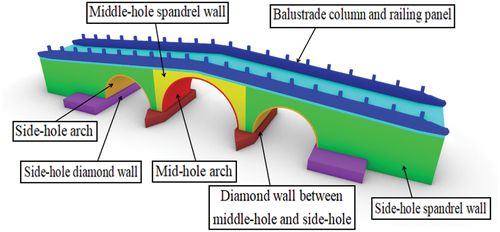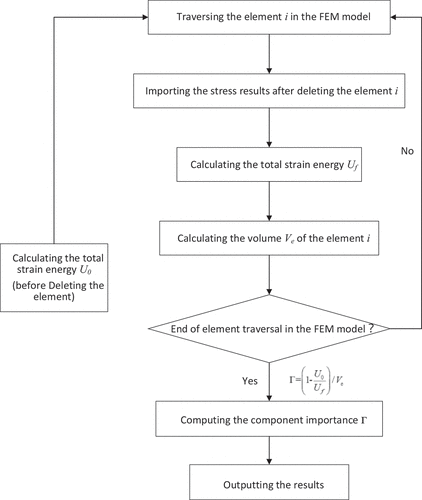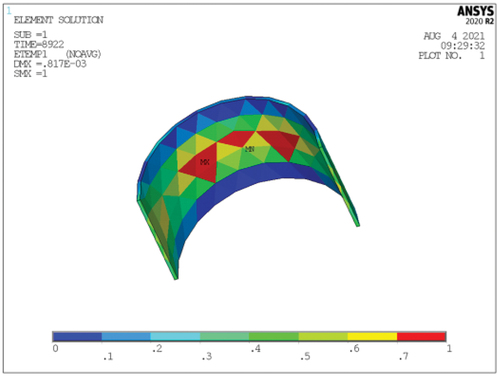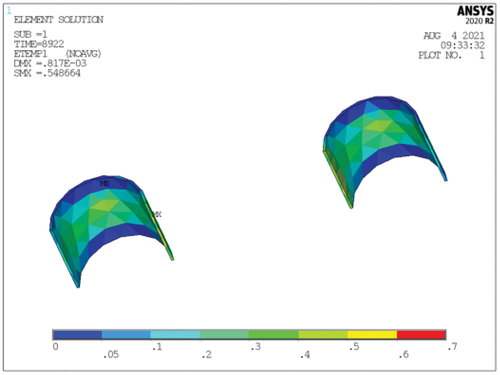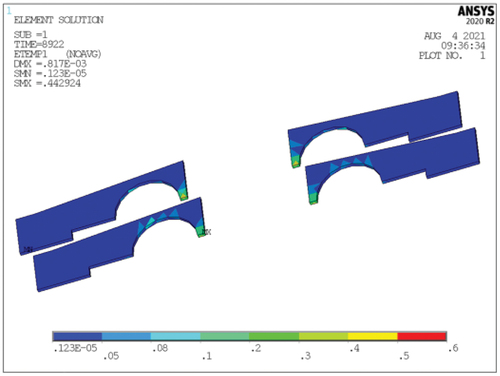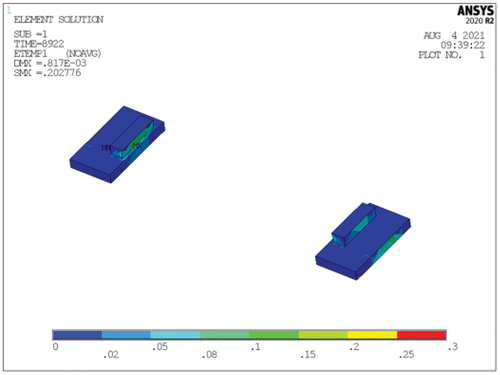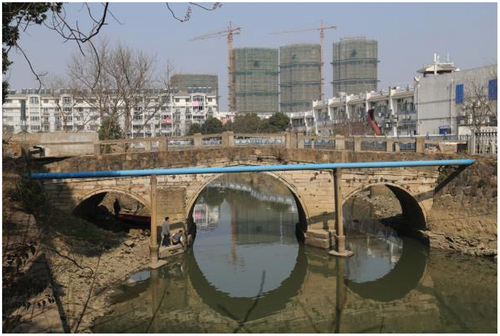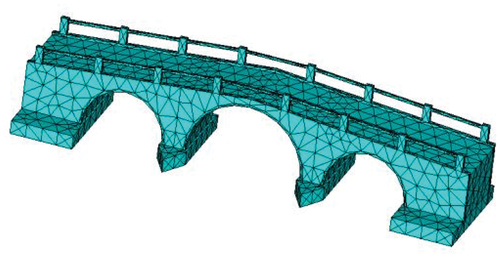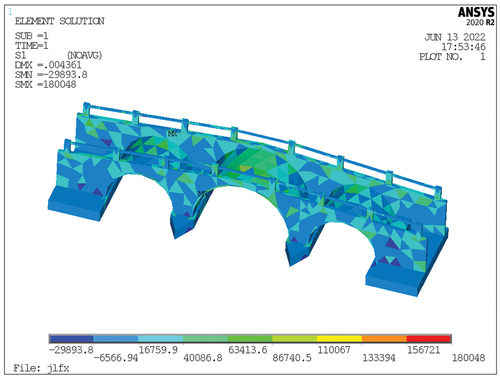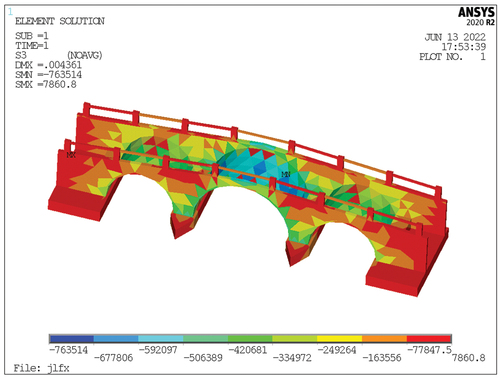Figures & data
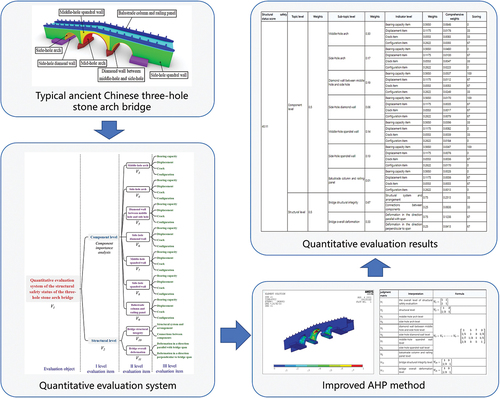
Figure 1. Statistical results regarding types and holes of ancient stone arch bridges in Jiangsu Province.
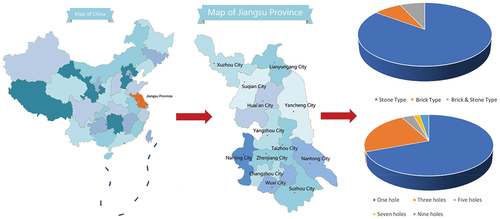
Table 1. Statistics of the key information of ancient stone arch bridges in Jiangsu Province.
Figure 3. Structural safety evaluation system of ancient three-hole stone arch bridge (V1, V2, … V11 are the judgment matrices, which are introduced in Section 2.2).
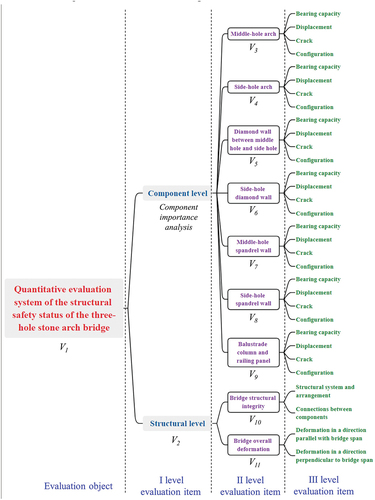
Table 2. Indicator rating and scoring for an ancient three-hole stone arch bridge.
Table 3. Scoring method of structural safety status of three-hole stone arch bridges.
Table 4. Scaling of judgment matrix and interpretations.
Table 5. The average random consistency index values for the hierarchical analysis method.
Table 6. The detailed judgment matrices for three-hole arch bridges.
Figure 7. Distribution of importance coefficients per unit volume of the diamond walls between middle-hole and side-holes.
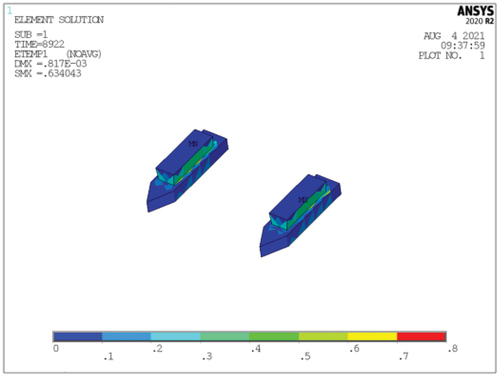
Figure 9. Distribution of importance coefficients per unit volume of the middle-hole spandrel walls.
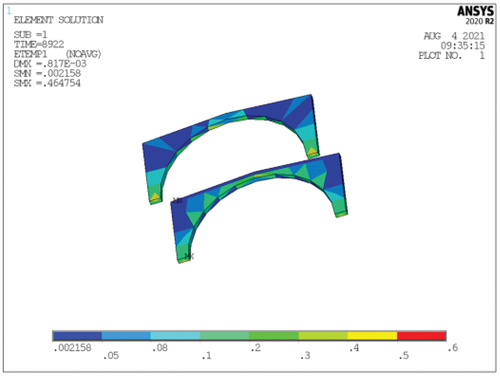
Figure 12. Distribution of importance coefficients per unit volume of the balustrade column and railing panel.
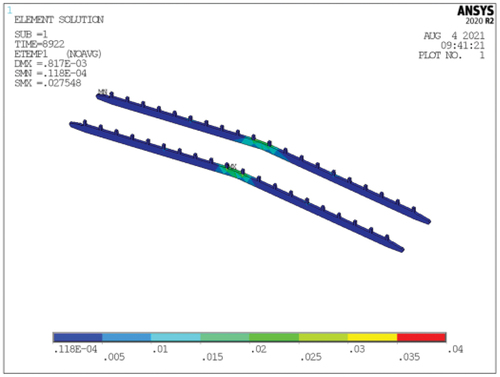
Table 7. The normalized weight coefficients of the structural components.
Figure 14. Current situation of the diamond walls. (a) The side-hole diamond wall is generally in good condition. (b) Missing and loose stones of the diamond walls between the middle and side holes.
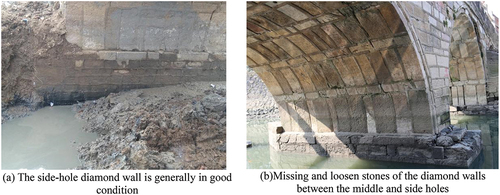
Figure 15. Current situation of the arches. (a) Missing stones and cracks of side-hole arch. (b) Cracking and deformation of the middle-hole arch.
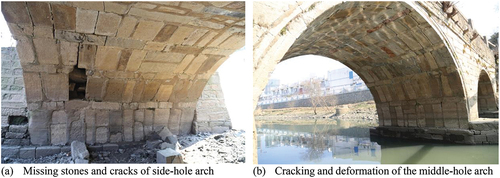
Figure 16. Current situation of the spandrel walls. (a) Bulging and deformation of the spandrel wall of the side-hole. (b) Bulging and deformation of the spandrel wall of the middle-hole.
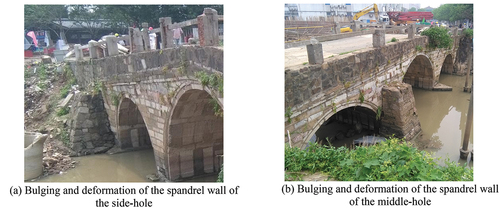
Figure 17. Current situation of the balustrade columns and railing panels. (a) Current situation at the upstream side of the balustrade column and railing panel. (b) Current situation at the downstream side of the balustrade column and railing panel.
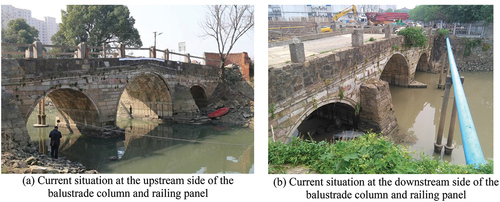
Table 8. Scoring of displacement, crack and configuration items of Yongchang Bridge.
Table 9. Parameters of the main materials.
Table 10. Mechanical analysis results under different load conditions.
Table 11. Scoring of bearing capacity item of Yongchang Bridge.
Table 12. Scoring of the evaluation items at structural level.
Table 13. Quantitative evaluation of the structural safety status of the Yongchang Bridge.

